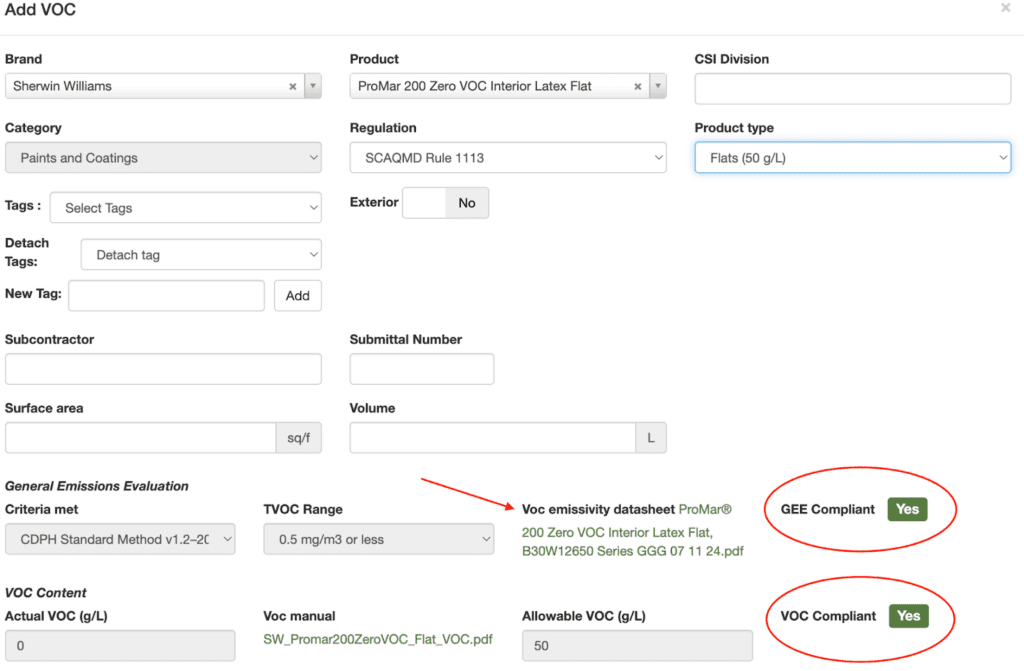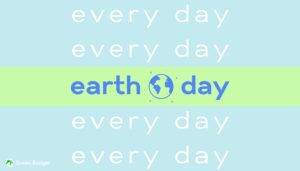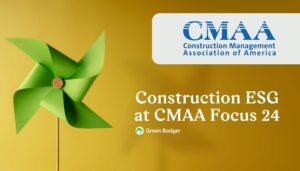
Lauren Breckenridge, LEED AP
Sustainability Associate at Green Badger
In an age when sustainability and human well-being are at the forefront of global concerns, the construction industry faces significant challenges in reducing its environmental impact and creating healthier spaces for occupants.
However, innovative solutions like Green Badger software, LEED and the WELL Building Standard are leading the way in revolutionizing sustainable construction practices. Utilizing Green Badger can help satisfy WELL credits that overlap with LEED. We will dive into how you can use Green Badger to satisfy WELL credits while tracking your LEED credits.
One of the key benefits of the crosswalk is the identification of overlapping credits between LEED v4.1 and WELL v2. This means that specific sustainable design and operational strategies implemented to earn LEED credits can also contribute to meeting the criteria for WELL certification, and vice versa. By leveraging these overlapping credits, project teams can optimize their efforts, reduce redundancies, and maximize their impact on both environmental sustainability and occupant health.
For instance, strategies for material ingredient reporting, environmental product declarations, indoor air quality among a few others can qualify for credits in both LEED v4.1 and WELL v2. We will highlight how to use Green Badger as a tool for satisfying those WELL requirements.
Green Badger Software: Simplifying Sustainable Construction
Green Badger software has become a game-changer in the world of sustainable construction. Its mission is to empower construction professionals to achieve green building certifications and adopt eco-friendly practices with ease. Green Badger serves as a centralized platform that simplifies the complex process of tracking and managing sustainable projects.
By integrating Green Badger into their workflows, construction companies gain a competitive edge by showcasing their commitment to sustainability. The software not only helps them win contracts from eco-conscious clients but also enhances their reputation within the industry as pioneers in green construction practices.

The Synergy of Green Badger and WELL: A Comprehensive Approach
The combination of Green Badger software and the WELL Building Standard offers a comprehensive approach to sustainable construction and occupant well-being. These two solutions work in tandem, reinforcing each other’s objectives and creating a more holistic understanding of what constitutes a healthy and sustainable building.
The Overlapping Credits
Below is a highlight of what WELL credits you can utilize Green Badger for. Please reference our blog WELL Building Standard: An Overview to look up more information regarding additional credit overlaps and corresponding requirements.
MRc4: Material Ingredients Option 1 Material Ingredient Reporting
The WELL corresponding credit has three parts and we can use some components of this LEED credit to help us partially satisfy the Select Products with Disclosed Ingredients and Select Products with Third-Party Verified Ingredients. Note that permanently installed products come from the same categories for both programs.
When looking for products to satisfy WELL credits X07.1 Select Products with Disclosed Ingredients and X07.3 Select Products with Third-Party Verified Ingredients pertaining to Material Transparency you can use Green Badger’s database to look up products that one of the following Declare, HPDs or Cradle to Cradle.
Example of where the documentation is.
MRc4: Material Ingredient Optimization Option 2 Material Ingredient Optimization
With the help of this LEED credit we can utilize some of the requirements to get us started on the WELL credits Select Materials with Enhanced Chemical Restrictions and Select Optimized Products.
When looking for products to satisfy WELL credits X08.1 Select Materials with Enhanced Chemical Restrictions and X08.2 Select Optimized Products pertaining to Material Transparency you can use Green Badger’s database to look up products that have Cradle to Cradle certificates and Declare Labels that are Red List Free. Utilize the advance search button and select MIR 2 to pull products to meet this requirement.
Example of where the documentation is.
Another great resource is our ebook on MRc4 Option 2: Material Ingredient Optimization. This gives an overview of the documentation requirements.
IEQc2: Low Emitting Materials
The idea for using products with low emitting materials is to prevent harsh chemicals from off-gassing into the air as well as contaminating our water and waste streams. Specifying materials with low VOC content in product categories such as paints, coatings, adhesives, sealants, flooring, insulation, and ceilings. Emissions for cost or volume/or surface area need to meet a threshold of either 75% or 90% depending on the product category you are attempting.
Using Green Badger to satisfy WELL credits X06.1 Limit VOC’S from Wet-Applied Products and X06.2 Restrict VOC Emissions from Furniture, Architectural and Interior Products.
For WELL projects you can utilize Green Badger to search your specified products to get the compliant CDPH documentation and as well as track the emissions and VOC compliance calculation thresholds. VOCs compliance threshold is only applicable to the wet-applied products.

*Note that WELL projects must achieve the Paints and Coatings and the Adhesives and Sealants Product Category.
Conclusion: One stop shop for documentation ease
The Green Badger software, LEED, and the WELL Building Standard represent a powerful trifecta that is reshaping the construction landscape. By utilizing Green Badger to satisfy overlapping WELL and LEED credits, construction professionals can embrace a comprehensive approach to sustainability and human well-being. This integration is the key to unlocking a brighter future for the construction industry, where buildings become not just structures but nurturing and sustainable havens for both people and the planet.






